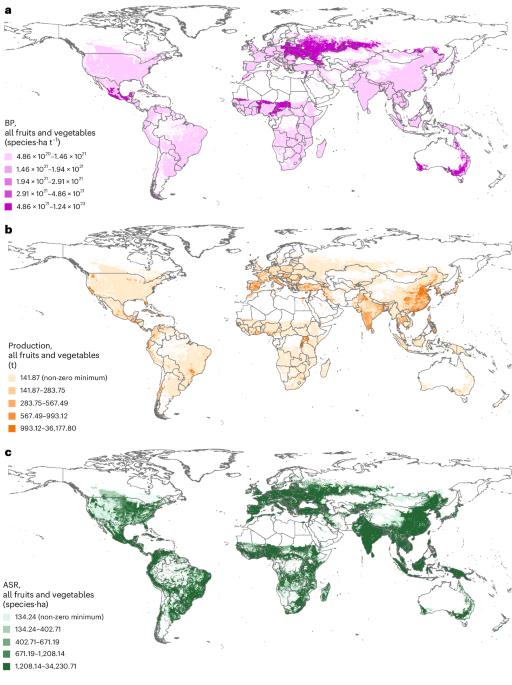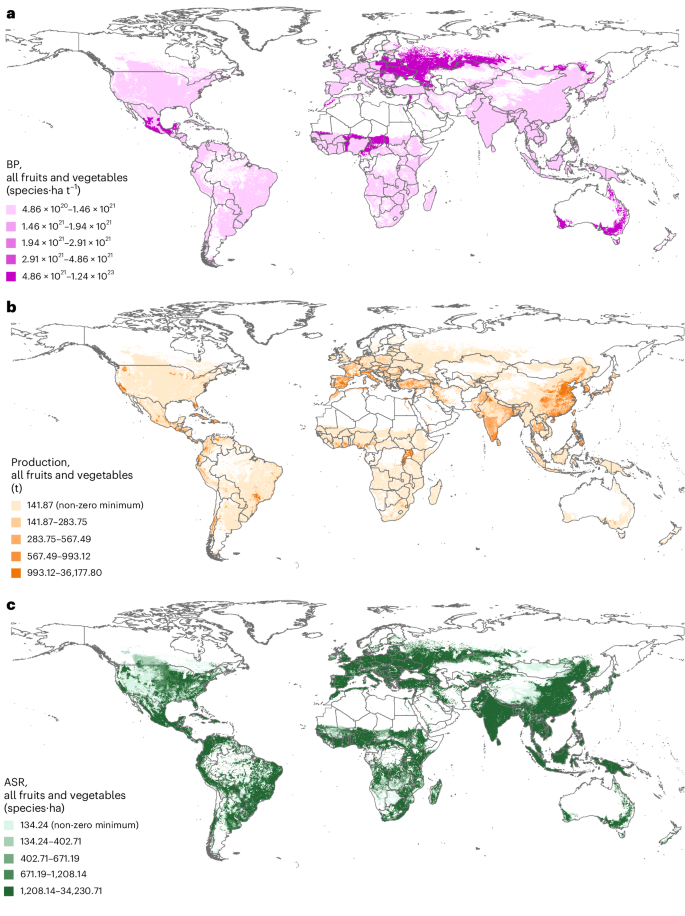Biodiversity pressure from fruit and vegetable consumption in the United Kingdom, India and South Africa varies by product and growing location
IF 21.9
Q1 FOOD SCIENCE & TECHNOLOGY
引用次数: 0
Abstract
In many countries around the world, fruit and vegetable consumption must increase to improve human health, potentially pressuring local and global biodiversity. Here we use biodiversity-pressure metrics to compare the biodiversity pressures associated with fruits and vegetables consumed in the United Kingdom, India and South Africa. We found that biodiversity pressure for individual crops varies greatly with origin. In all three countries, imported fruits are typically associated with greater pressure than domestically grown fruits. Contrastingly, in India and South Africa, imported vegetables generally have a lower biodiversity pressure than domestically grown vegetables. Oranges, popular in the United Kingdom and South Africa, exert almost three times more biodiversity pressure than bananas—one of the most-consumed fruits in the United Kingdom and India. Our analysis illustrates the quantification of crop-specific biodiversity pressures and provides evidence for the development of more sustainable food systems. Increasing the consumption of specific food groups will be key for human health but might also lead to environmental impact. This study compares the biodiversity pressures associated with fruits and vegetables consumed in the United Kingdom, India and South Africa.


在英国、印度和南非,水果和蔬菜消费带来的生物多样性压力因产品和种植地点而异
在世界上许多国家,为了改善人类健康,必须增加水果和蔬菜消费,这可能给当地和全球生物多样性带来压力。在这里,我们使用生物多样性压力指标来比较与英国、印度和南非消费的水果和蔬菜相关的生物多样性压力。我们发现单个作物的生物多样性压力因产地而异。在这三个国家,进口水果通常比国产水果面临更大的压力。相比之下,在印度和南非,进口蔬菜的生物多样性压力通常低于国内种植的蔬菜。在英国和南非流行的橙子对生物多样性造成的压力几乎是香蕉的三倍——香蕉是英国和印度消费最多的水果之一。我们的分析说明了作物特定生物多样性压力的量化,并为发展更可持续的粮食系统提供了证据。
本文章由计算机程序翻译,如有差异,请以英文原文为准。
求助全文
约1分钟内获得全文
求助全文

 求助内容:
求助内容: 应助结果提醒方式:
应助结果提醒方式:


